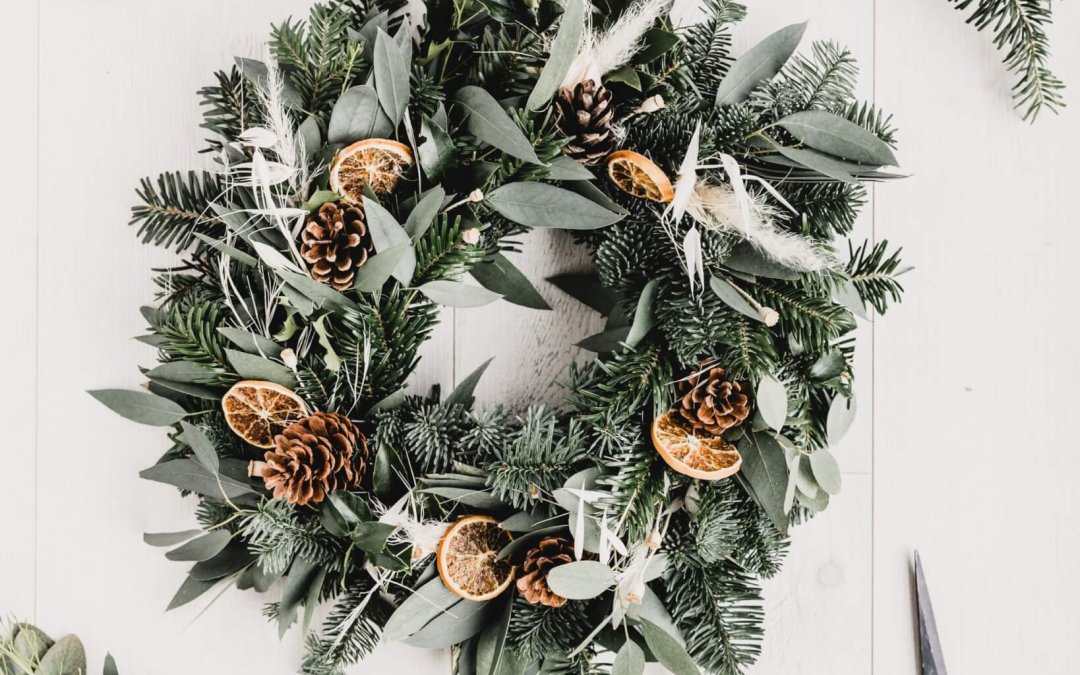Why do we hang mistletoe? What meaning does the shape of a wreath hold? Our Christmas and winter celebrations have a long and winding ancestral line of stories and folklore to delve into and there is nothing I love more than falling down a folklore rabbit hole.
I’ve been burrowing into the fables and folk tales of our much-beloved winter and Christmas greenery – the holly, the ivy, the mistletoe, the yew. I can’t do it all justice in one blog post but I’ve pulled a few threads and woven a short round-up of the stories behind some of our favourite midwinter flora.
Who knows what truths these many tales hold, but when it comes to folklore – it is not cold, hard facts that we seek, it is the warmth and comfort of stories.
Over time, each generation breathes new life into old, wrapping layer upon layer of tradition and ritual around the festive celebrations of the winter season. But invariably the beauty of our Christmas greenery is sought out and revered. Boughs and branches are brought indoors to remind us that the green of life stills thrives, even on the coldest, darkest winter’s day.
The holly and the ivy,
Song by Andrew Peterson
When they are both full grown,
Of all trees that are in the wood,
The holly bears the crown
Holly Folklore
The Holly tree has a rich library of folklore, a stack of old wives tales and plenty of superstitions caught between it’s prickly branches.
It’s evergreen leaves and bright berries reflect light and add colour to the darker days of winter and the spiky leaves were often thought to ward off mischievous spirits. In Celtic mythology, the Holly King rules over this half of the year, passing his crown over to the Oak King at the fast approaching Winter Solstice.
Holly trees were also associated with thunder gods, traditionally planted for protection from lightning strikes – a choice which science has since proven to be very wise.
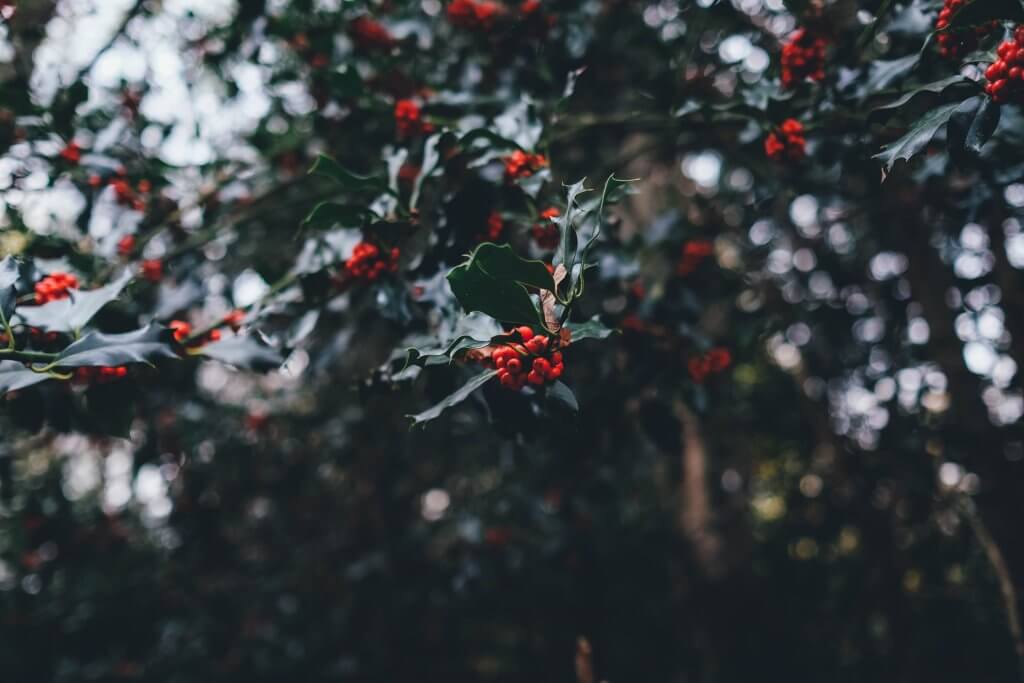
Ancient Romans associated holly with Saturn, the god of agriculture, fertility and harvest. They decorated their homes with holly wreaths during the festival of Saturnalia, celebrated on the days following December 17th.
The carol ‘Deck the Halls with Boughs of Holly’ originated in Wales in the 16th century, showing the continued use of holly within Christmas decorations. Other carols of this period also mention ivy and holly as decorations brought into the home for Christmas celebrations.
Yew Folklore
According to a recent Guardian article, Britain is home to far more ancient yews than any other country in Europe. The Ancient Yew Group has identified 978 ancient or veteran yews (more than 500 years old) in England and 407 in Wales; it is an ancient tree steeped in rich folklore with a close connection to death and rebirth.
Old Norse and Celtic beliefs were focused on the protective spirit of the yew trees, it was thought that the yew guarded against bewitchment and death and it was celebrated at the mid winter festivals of the Solstice and during the Roman festival of Saturnalia.
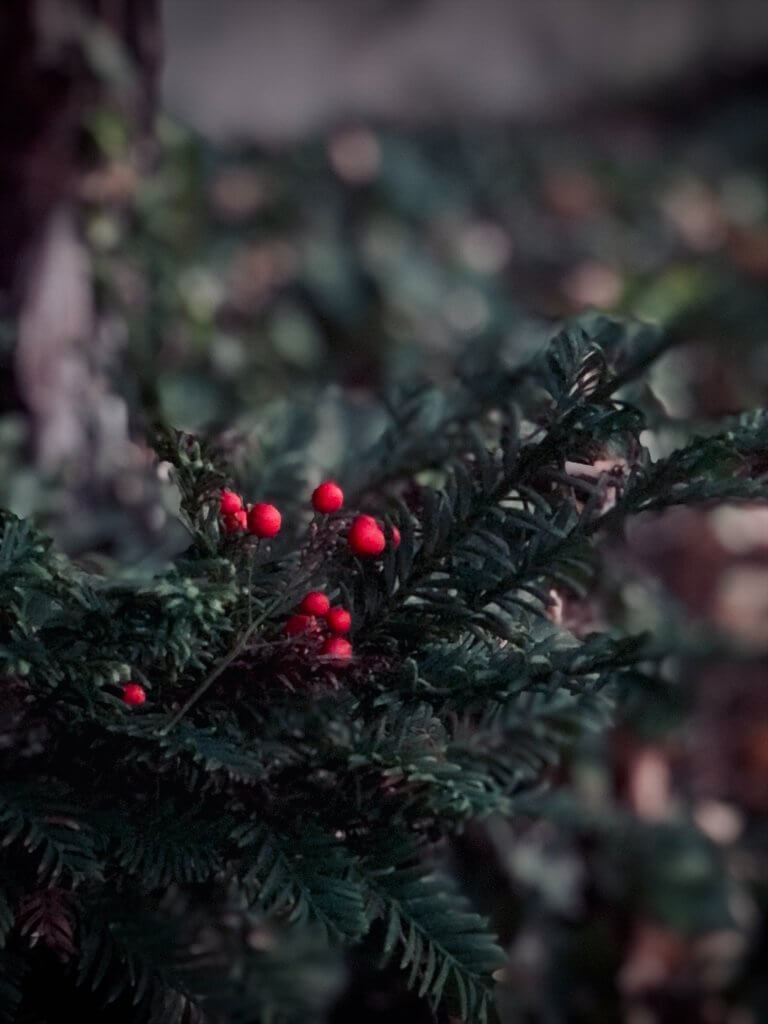
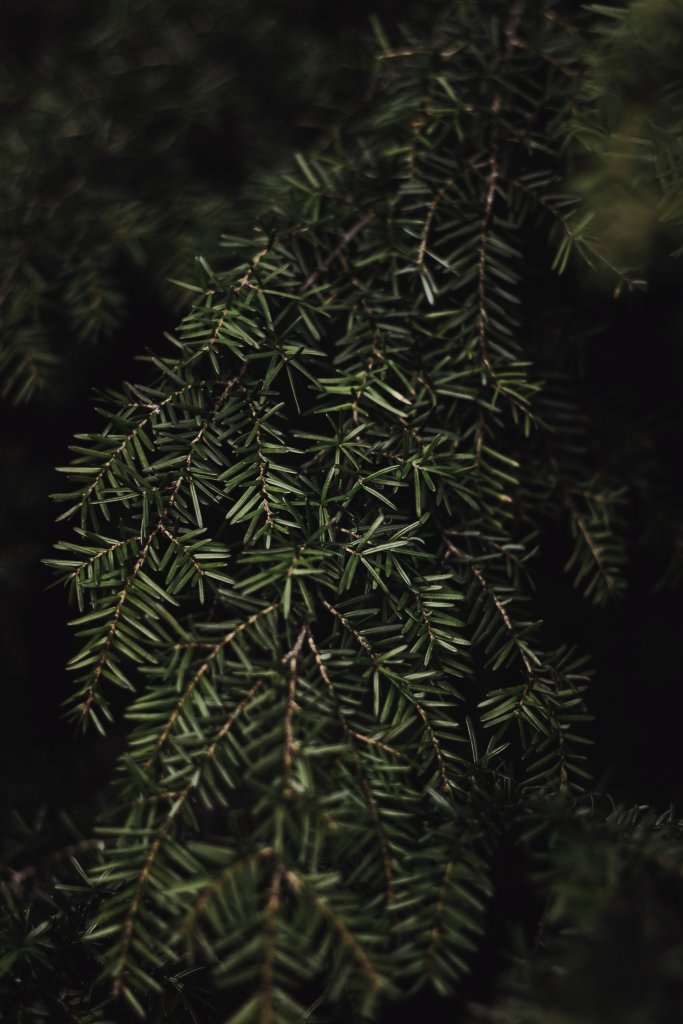
It is likely that the Druids held the yew tree to be extremely sacred in pre-Christian times. The yew’s qualities of longevity and regeneration give it a mystical aura, the branches of old trees can root and form new trunks where they touch the ground. It is likely this regenerative quality that answers the question why the tree came to symbolise death and resurrection in Celtic culture.
In more recent times, the tree has gained some unlucky superstitions due to it’s connection with graveyards and death. One superstition which gained ground in Victorian times is that if one brings yew branches in along with Christmas decor, it will lead to a death in the home.
Ivy Folklore
Like holly, ivy has been revered for keeping its leaves over winter and was likewise associated with eternal life. It was thought to help with the recovery of sick animals and in Shropshire, a piece of ivy was fed to animals before midday on Christmas day to keep the evil spirits away for the coming year.
Holly, ivy and other greenery were also used during Winter Solstice celebrations to ward off evil spirits and celebrate new growth. Holly was thought to be the male plant and ivy the female. It was also seen as a symbol of prosperity and charity by the early Christians, and displayed as a reminder to help the less fortunate.
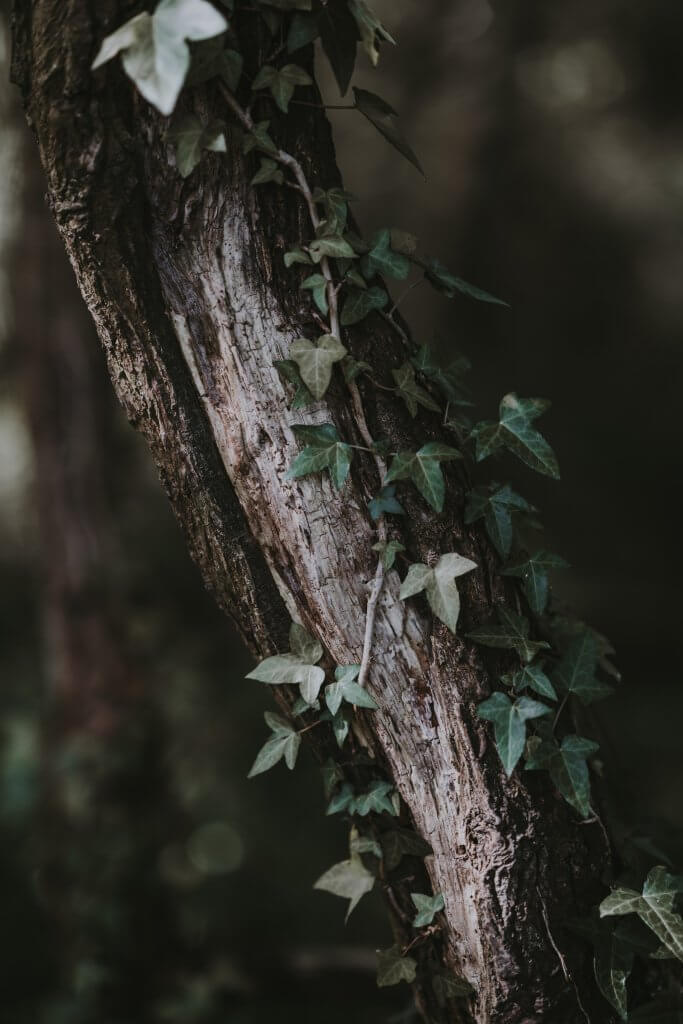
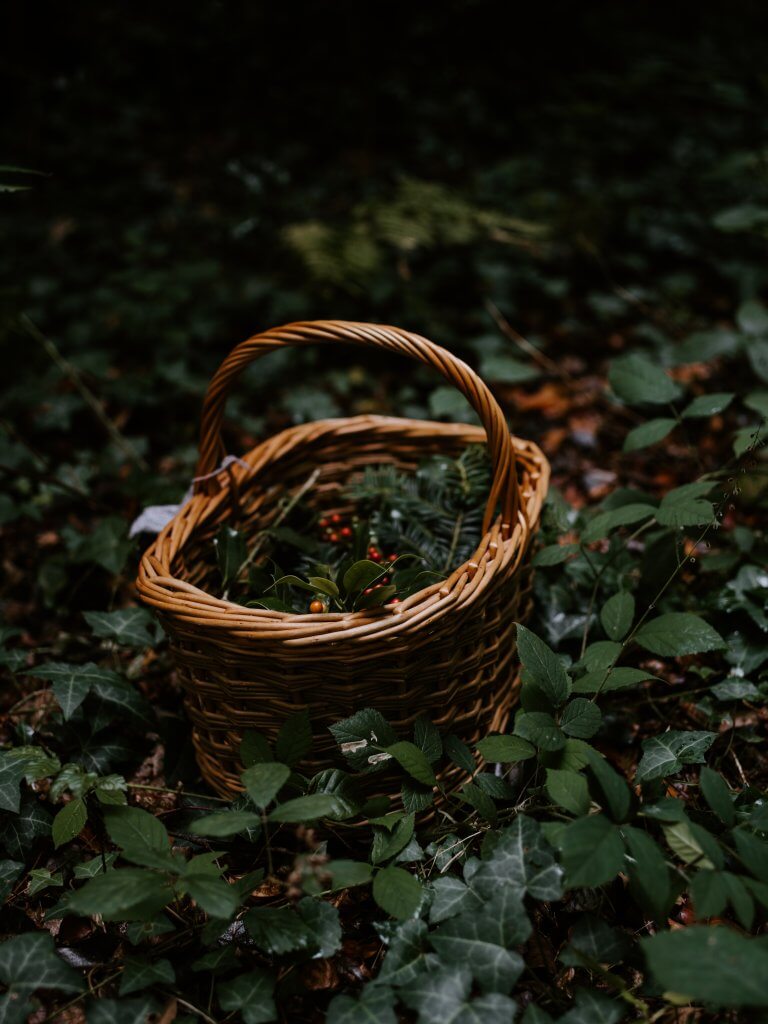
Mistletoe Folklore
The ancient Druids also believed mistletoe to be an indicator of great sacredness. The Winter Solstice, called ‘Alban Arthan’ , was according to Bardic Tradition, the time when the Chief Druid would cut the sacred mistletoe from the Oak.
According to the Anglo-Saxons, kissing under the mistletoe was connected to the legend of Freya, goddess of love, beauty and fertility. According to legend, a man had to kiss any young girl who, without realizing it, found herself accidentally under a sprig of mistletoe hanging from the ceiling.
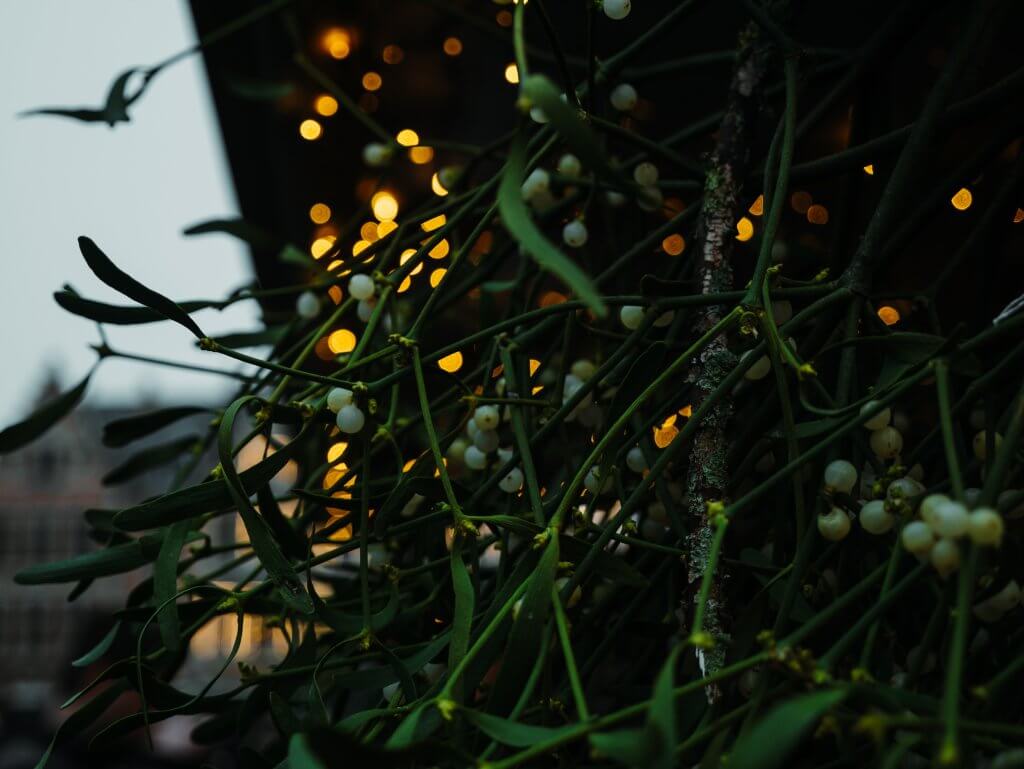
What do wreaths symbolise?
Hanging a circular wreath of evergreens during mid winter is an ancient practice. It might have started back in Roman times when wreaths were hung on their doors as a sign of victory and of their high status.
Wreaths are part of many ancient traditions dating back to the earliest civilizations. The circle is a symbol of immortality; throughout history, wreaths have been associated with life, rejuvenation, and renewal.
The word wreath is said to come from the old English word “writhen” meaning to twist, as in a circle or wheel. The wreath is also said to represent the wheel of the year, in recognition of the fact that the darkness and cold of winter will eventually fade away.
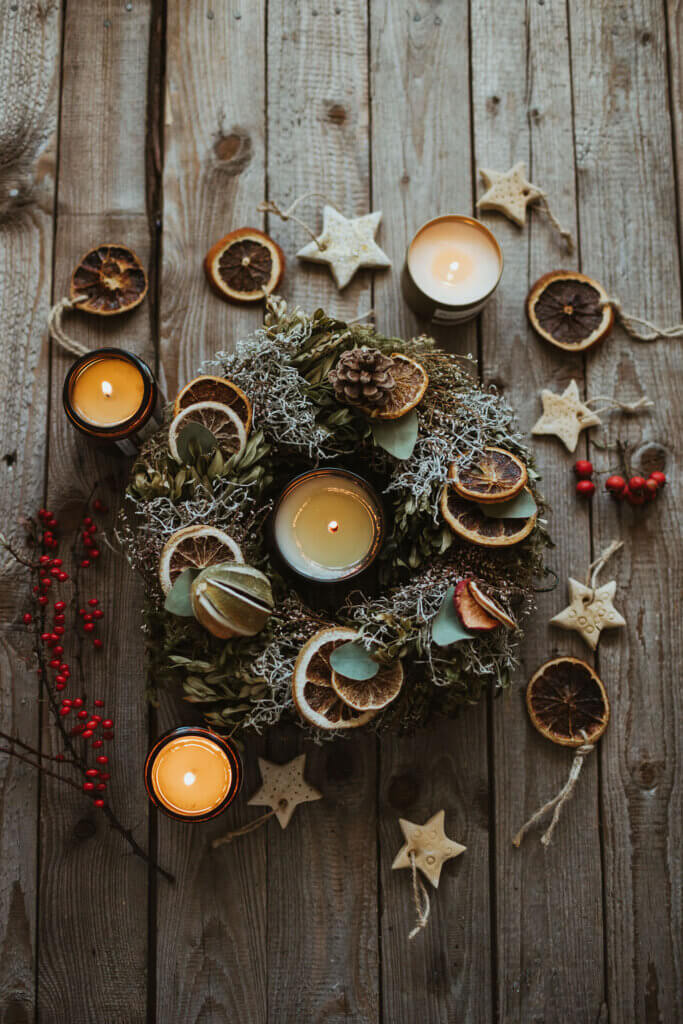
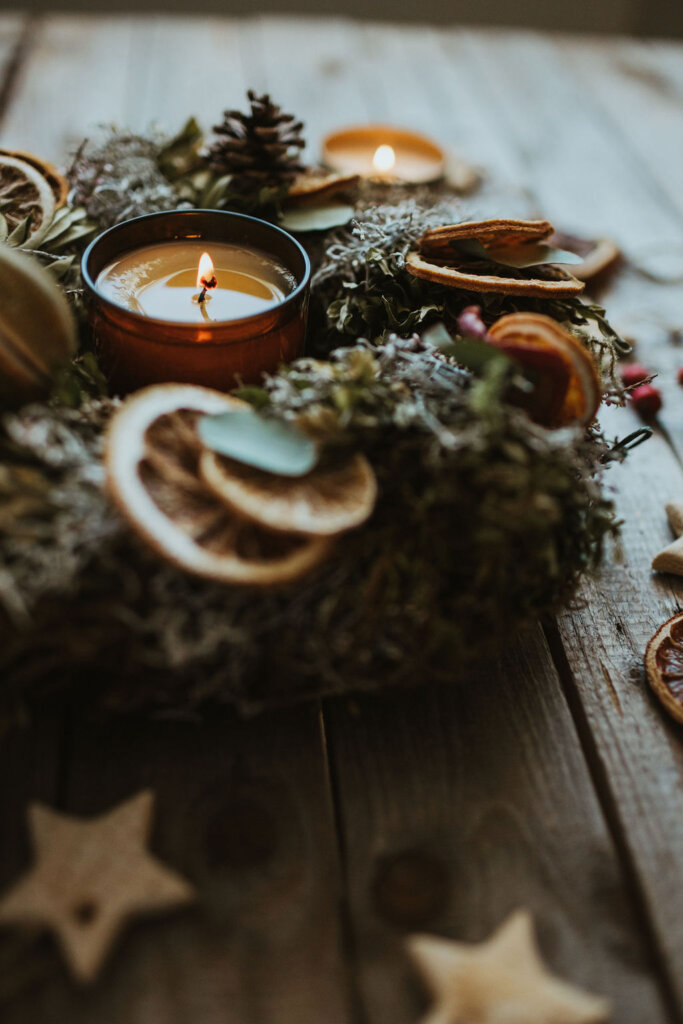
What winter evergreens will you be bringing into your home over this festive season? Comment below and tell me what boughs and branches you bring in this year or tag me in your festive images of Christmas greenery over on Instagram.

